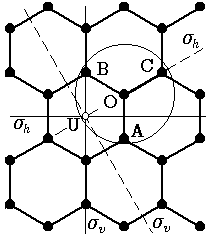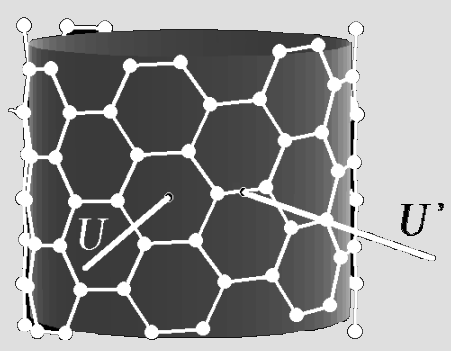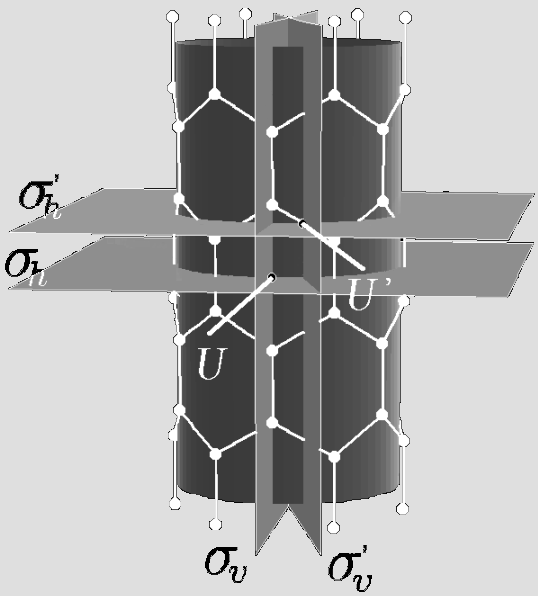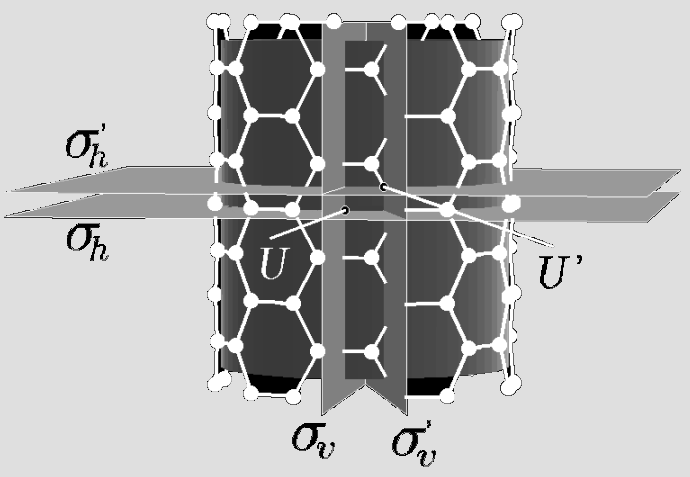CARBON NANOTUBES
Single wall carbon nanotubes have line
group symmetry.
Depending on the single wall constituents and
their relative position, multiwall tubes may be both periodic (with line
group symmetry) or aperiodic (point group symmetry). The high symmetry
of nanotubes tremendously simplified studies of physical tensors, selection
rules, potentials, electronic and vibrational
bands...Optical activity of the chiral carbon
tubes only is predicted together with geometry of optical axes. Conserved
quantum numbers are translational, chiral and residual angular momenta,
together with parities. Invariant potentials are used to analyze stability
of multiwall tubes and the chiral curents. Modified
group projector technique gives symmetry assignation and topology of
the energy bands. Different tubes have highly incompatible symmetries.
This fact is used to predict extremely low friction between the walls in
the multiwall tubes, as a result of specific symmetry breaking: even free
sliding of the incommensurate walls occurs as a Goldstone mode.
The PC program POLSym®
efficiently performs all these calculations.
References





